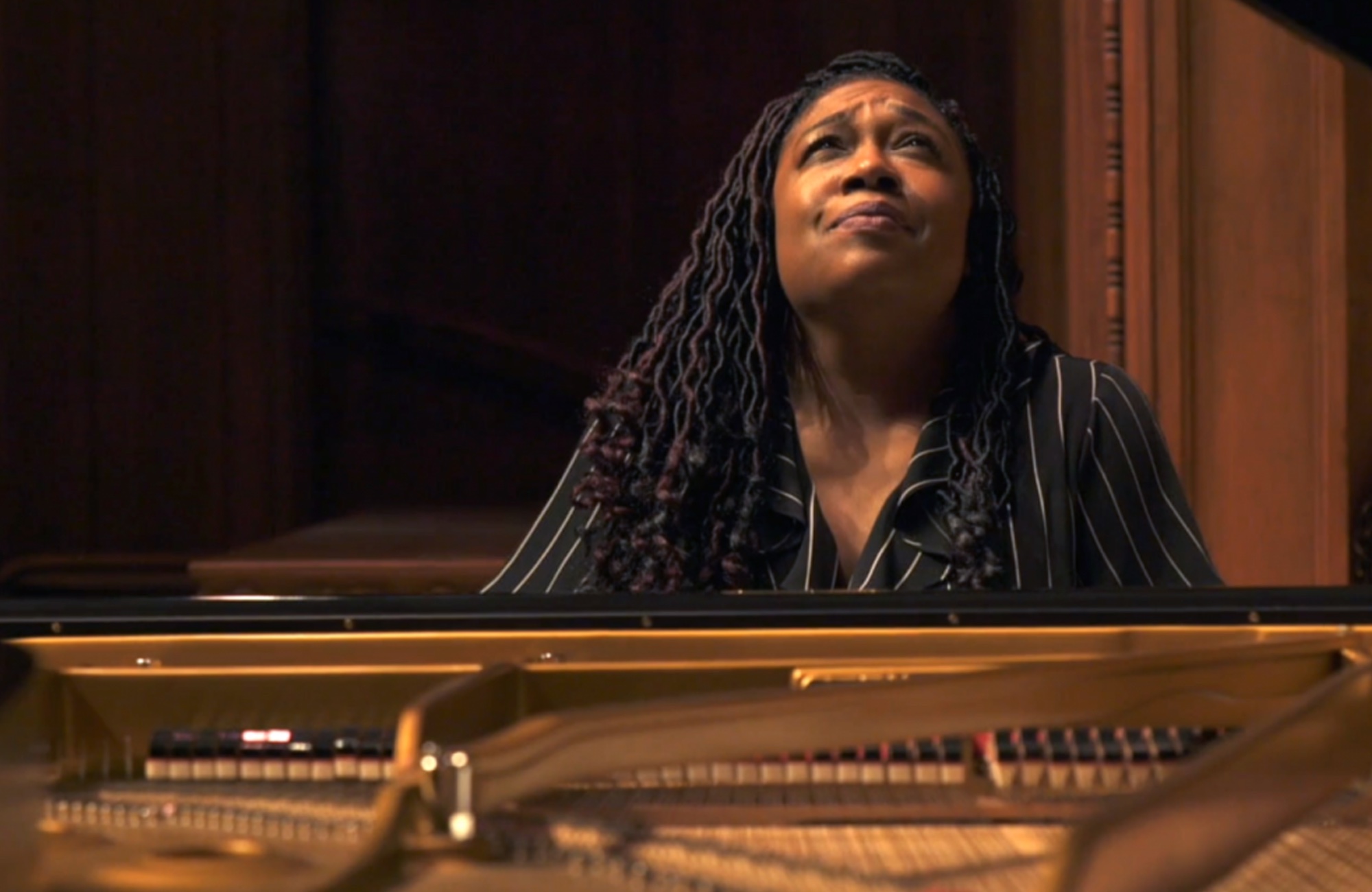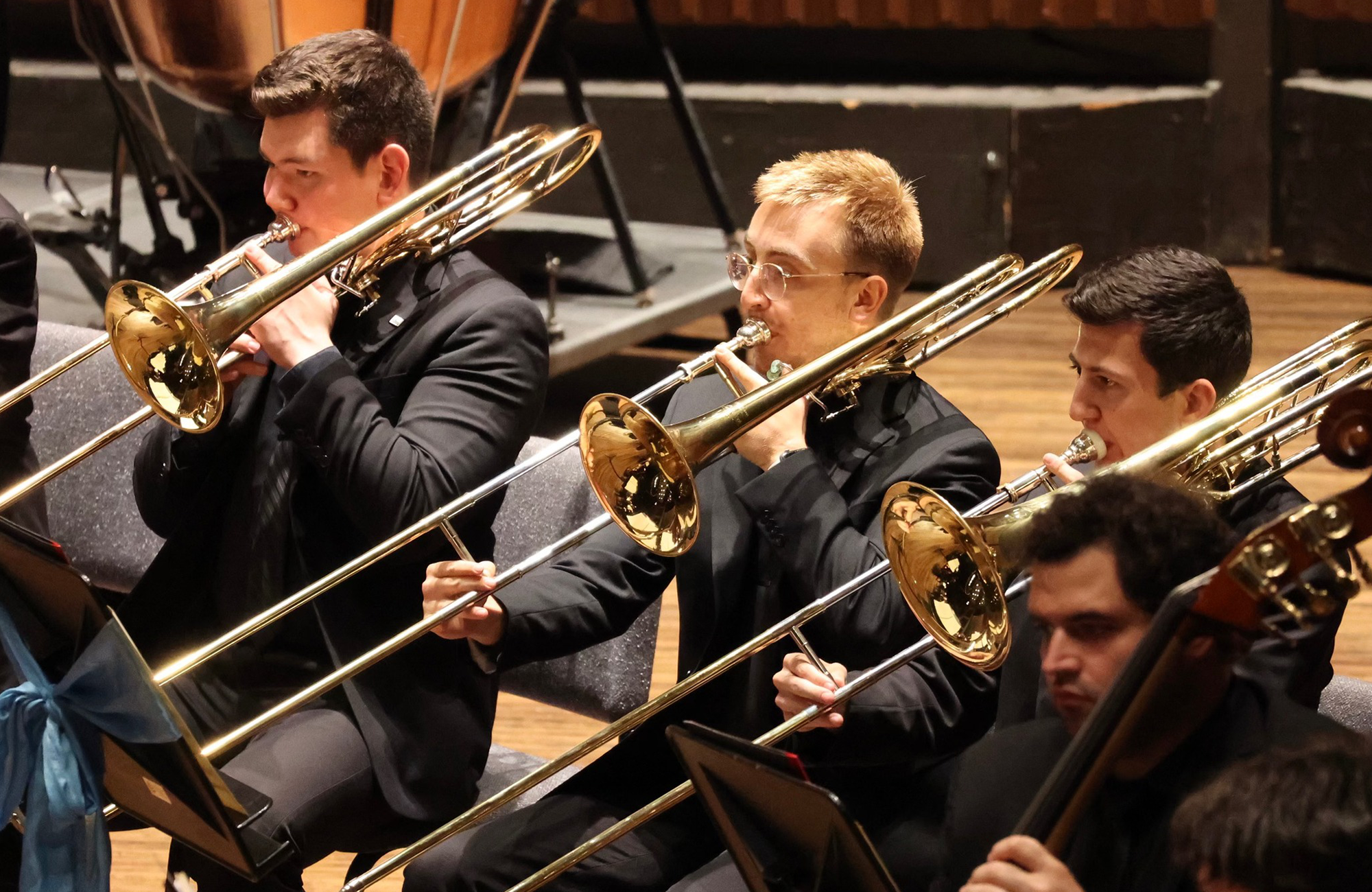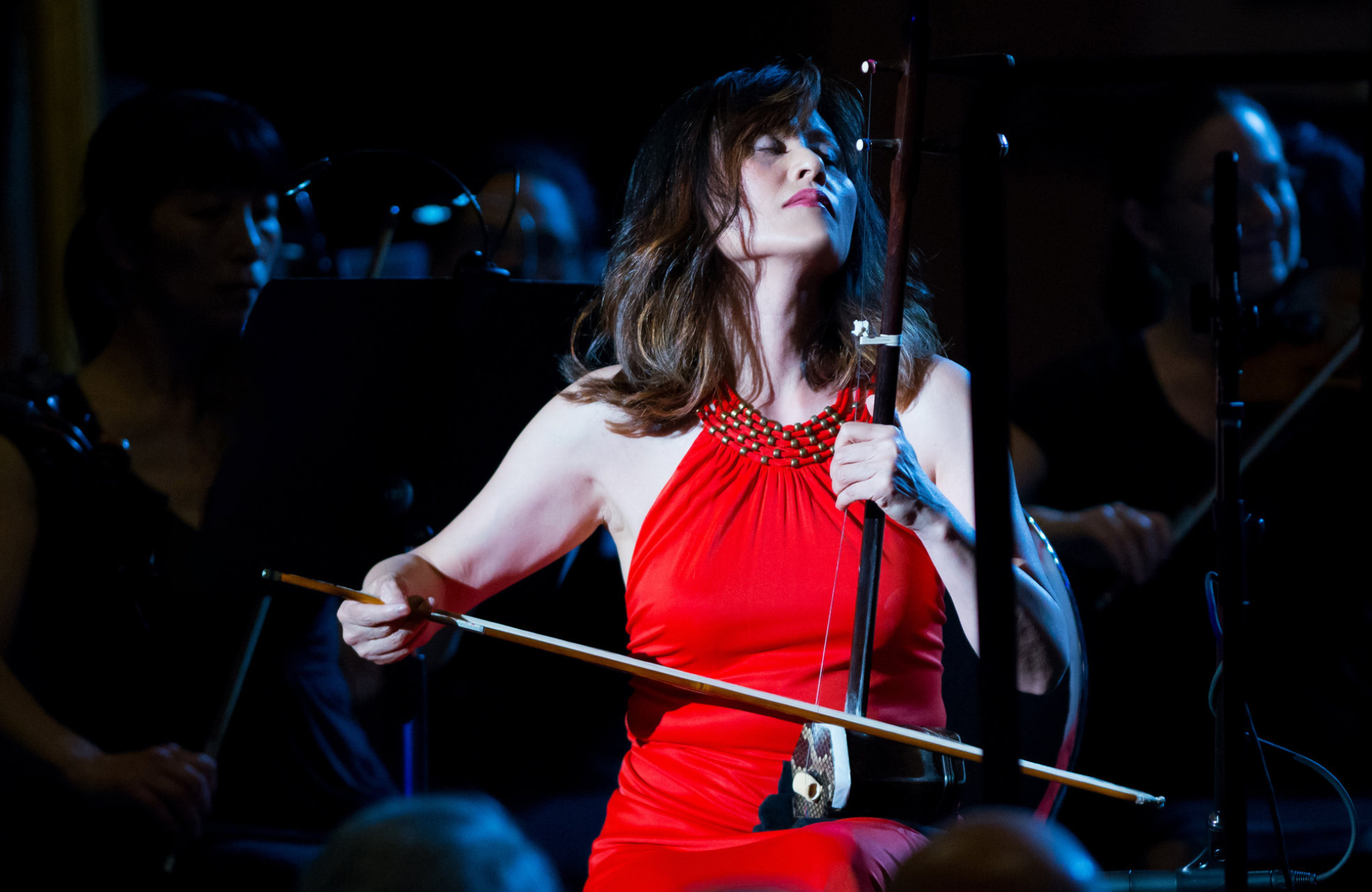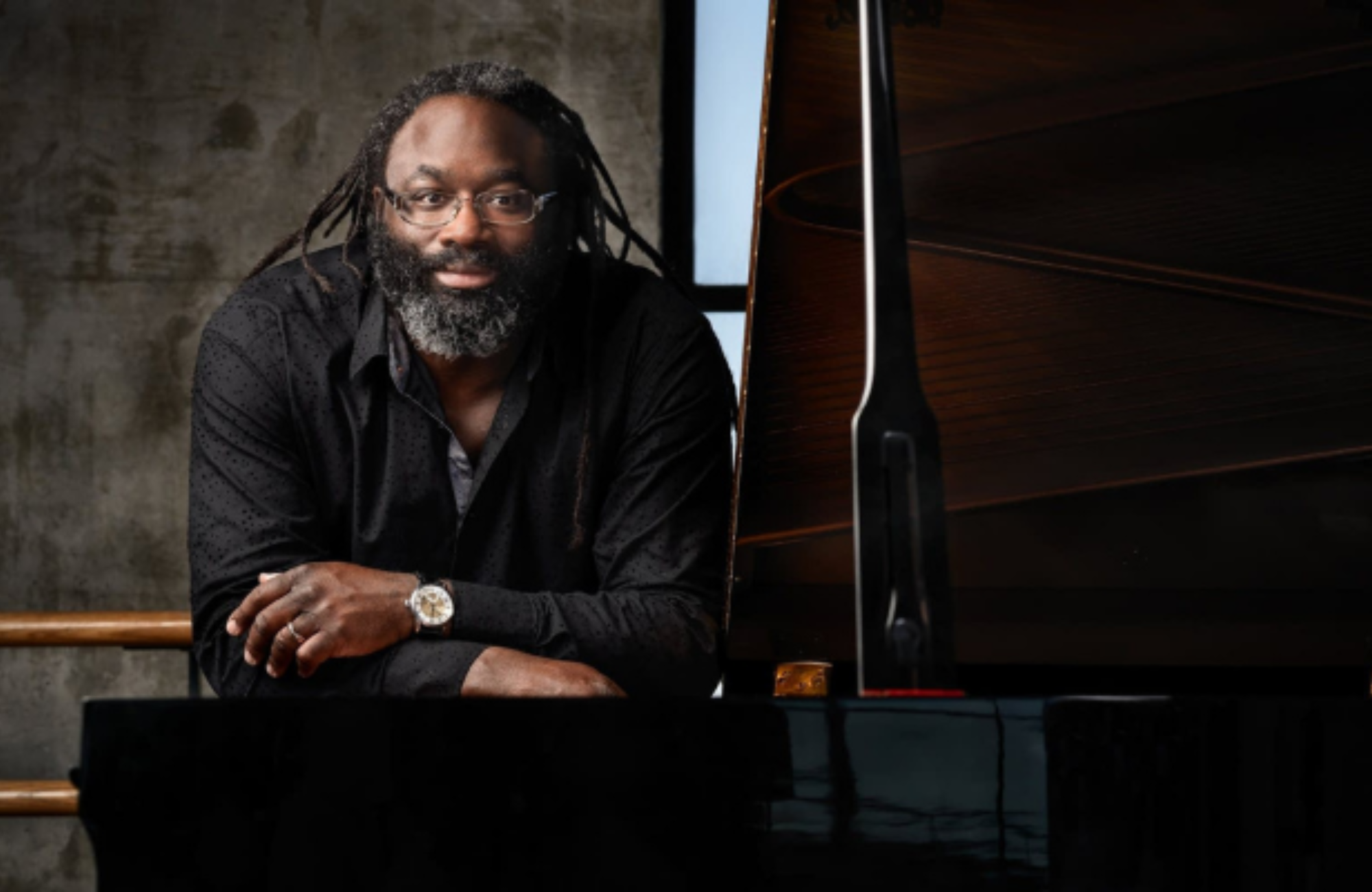A champion of the music of Florence Price, Michelle Cann takes us on a journey with Price’s Concerto for Piano. Discover how Gabriela Lena Frank’s Elegia Andina evokes power and grandeur of the Andes Mountains. Rediscover favorites Smetana’s The Moldau and Dvorak’s Symphony No. 8.
PROGRAM
SMETANA: Moldau (No. 2 from Ma vlast) ![]()
FRANK: Elegía Andina (Andean Elegy) ![]()
PRICE: Concerto for Piano (In One Movement) ![]()
DVORAK: Symphony No. 8 in G major, Opus. 88 ![]()
To view a digital copy of the printed program, click here.
Thanks to our sponsors for this performance!
Jim & Marilyn Seago
PROGRAM NOTES
The murmurs of two flutes that open Vltava (The Moldau), composed in 1874 by Bedřich Smetana (1824–1884), represent the two springs, one cold and one warm, that join and eventually become the Vltava River. The Vltava is the largest river in the Czech Republic—and Smetana’s tone poem describes its journey from these modest beginnings to its imposing passage through Prague, representing, along the way, Bohemian forests, peasant celebrations, moonlit dances of water nymphs, and memories of Czech history evoked by its ruined castles. Vltava is the second of the six tone poems that eventually made up the monumental ...
The murmurs of two flutes that open Vltava (The Moldau), composed in 1874 by Bedřich Smetana (1824–1884), represent the two springs, one cold and one warm, that join and eventually become the Vltava River. The Vltava is the largest river in the Czech Republic—and Smetana’s tone poem describes its journey from these modest beginnings to its imposing passage through Prague, representing, along the way, Bohemian forests, peasant celebrations, moonlit dances of water nymphs, and memories of Czech history evoked by its ruined castles. Vltava is the second of the six tone poems that eventually made up the monumental anthem of Czech nationalism Má Vlast/My Fatherland—and it has been the most popular. Smetana was deaf by the time he wrote this piece, but its vivid colors belie his condition.
It’s no surprise that Vltava incorporates a fair amount of folk-like music, as well as one quoted tune, which seems to embody the river itself. What is surprising, though, is that the provenance of that tune is not Czech. It was certainly popular in Central Europe, but also it showed up in Sweden (where Smetana briefly lived), and probably originated in Italy. As “Hatikvah,” it eventually became the national anthem of Israel. Music, it seems, is not confined by national borders.
Nor is music confined by historical period. The flutes that open the piece not only represent the source of the Vltava—they also, more figuratively, turn out to be the source of tonight’s entire program, which reveals how the kind of musical nationalism invoked by Smetana winds its way through the centuries. Closest to Smetana is his compatriot Antonín Dvořák (1841-1904), whose Symphony No. 8 (1889) ends the concert. Smetana was not literally Dvořák’s teacher—and indeed, over the years, there were moments of rivalry. But Smetana was a major influence on Dvořák’s development. As a conductor, Smetana premiered several of Dvořák’s works; and Dvořák, who was for a time an orchestral violist, learned a great deal of Czech music under Smetana’s baton.
The Eighth was composed in 1889, when Dvořák was at the height of his powers. The process seems to have been untroubled. He wrote the work in less than three months, and the spirit is confident and upbeat. It’s Dvořák’s sunniest symphony, enriched by his prodigious melodic invention. You’d hardly guess that within less than two months he’d be hard at work on his darkly poignant Requiem. Unlike Vltava, the Eighth doesn’t appear to quote any actual folk songs, but it too has a folksy quality; and its geniality certainly doesn’t mute its exuberance. The finale, a theme and variations, is one of the most uplifting in the Dvořák canon—and the closing pages are as thrilling as anything Dvořák wrote.
Smetana’s influence on Dvořák eventually flowed to the New World. How? When Dvořák wrote the Eighth, he was not only at the height of his powers—he was also at the height of his fame, and within a few years, he was in the United States. He had been invited by Jeannette Thurber, president of the National Conservatory of Music in New York, who asked him to serve as the school’s artistic director. Thurber felt that American composers were too beholden to European models. True, Dvořák was a European. But he was outside the Austro-German tradition; and since he wrote music inspired by his own nation’s folk music, she hoped that he would encourage US composers to do the same. Her expectations were fulfilled. During his years here (1892–1895), he had a profound effect, pushing the country’s classical music in new directions—in particular, by encouraging the incorporation of African American and Native American traditions. His ideas had an especially strong impact on Florence Price (1887–1953), although she was born far too late to work directly with him.
Price had a heartbreaking career. Born in Little Rock and trained in Boston, she spent most of her life in Chicago. She made headlines when the Chicago Symphony performed her First Symphony. But while she was the first Black woman to have a work performed by a major American orchestra, she was increasingly pushed aside, to a large extent because of race and gender. By the time she died, she was virtually forgotten—and were it not for the fortuitous discovery of a huge stash of manuscripts in 2009, she might well remain unknown even today. In the last decade, however, her work has been performed with increasing frequency, to tremendous acclaim.
Her Piano Concerto is one of her most endearing large-scale compositions—although the term “large-scale” may be misleading. As tonight’s pianist Michelle Cann points out, so many of the standard concertos last a half hour or forty minutes. Price’s, which compresses three movements into one, is a compact eighteen. And yet, “there’s so much variety. She is able to pack so much adventure, mystery, and love—an entire novel—into this little amount of time.” The Concerto takes us on quite a journey. The first part reveals her “connection to her classical training, especially the romantic literature”; the final section, like movements in many of her works, takes the form of a juba, a rhythmically vital dance accompanied by clapping and body slapping that originated with enslaved Americans. “The roots of ragtime are certainly here,” Michelle points out—as will be delightfully clear when you hear it.
In between is a gorgeous, lyrical outpouring. On one level, says Michelle, “you wouldn’t think these things would mix, but that’s the signature of Florence Price: she’s able to weave them all together in a way that’s very cohesive. It’s like nothing you’ve ever heard.” And yet, it sounds familiar, too—since Price has tapped into the heart of American traditions. And like the Dvořák, it’s a work that, in Michelle’s words, is “full of positivity.” It’s a kind of musical quilt—and it offers the kind of comfort a quilt provides, too.
Like much of Price’s music, the Piano Concerto has a complex history. It was composed in 1934, and premiered with the composer at the piano, quickly followed by a performance with fellow composer Margaret Bonds taking the keyboard part. But during the years of Price’s neglect, it was lost; and when it was rediscovered in that treasure trove, it was in the form of a two piano reduction. Using that version, and some other materials, Trevor Weston created an orchestral accompaniment. Recently, however, Price’s orchestration was found, and it’s the original version we’ll be hearing tonight. The most important difference for Michelle is the scoring of the second section, where a long duet between piano and oboe has been restored. This is Michelle’s favorite part. It’s really chamber music, she says; as a result, since she’s always meeting a new oboist, “it’s never the same.”
Smetana, Dvořák, and Price all found ways to merge personal identity with cultural background. So does Berkeley-born Gabriela Lena Frank (b. 1972), although her cultural background, like that of an increasing number of people, is more complex. She describes herself as “a Peruvian-Chinese-Jewish-Lithuanian girl born with significant hearing loss in a hippie town.” She grew up nourished by (and thriving in) a richly multi-cultural environment and considers herself fortunate to live in a country where someone like her could “successfully create a life writing string quartets and symphonies.”
Elegia Andina (2000) is, she says, “one of my first written-down compositions to explore what it means to be of several ethnic persuasions, of several minds”—and she incorporates “stylistic elements of Peruvian arca/ira zampoña panpipes (double-row panpipes, each row with its own tuning) to paint an elegiac picture of [her] questions.” More than anything else on the program, this gorgeous evocation of the Andes brings us to a distant place. Distant, yet oddly familiar, too, since the flute parts—especially magical the two-flute cadenza toward the end of the piece—may bring you back to the opening of Vltava.
Peter J. Rabinowitz
Have any comments or questions? Please write to me at prabinowitz@ExperienceSymphoria.org
FEATURED ARTISTS
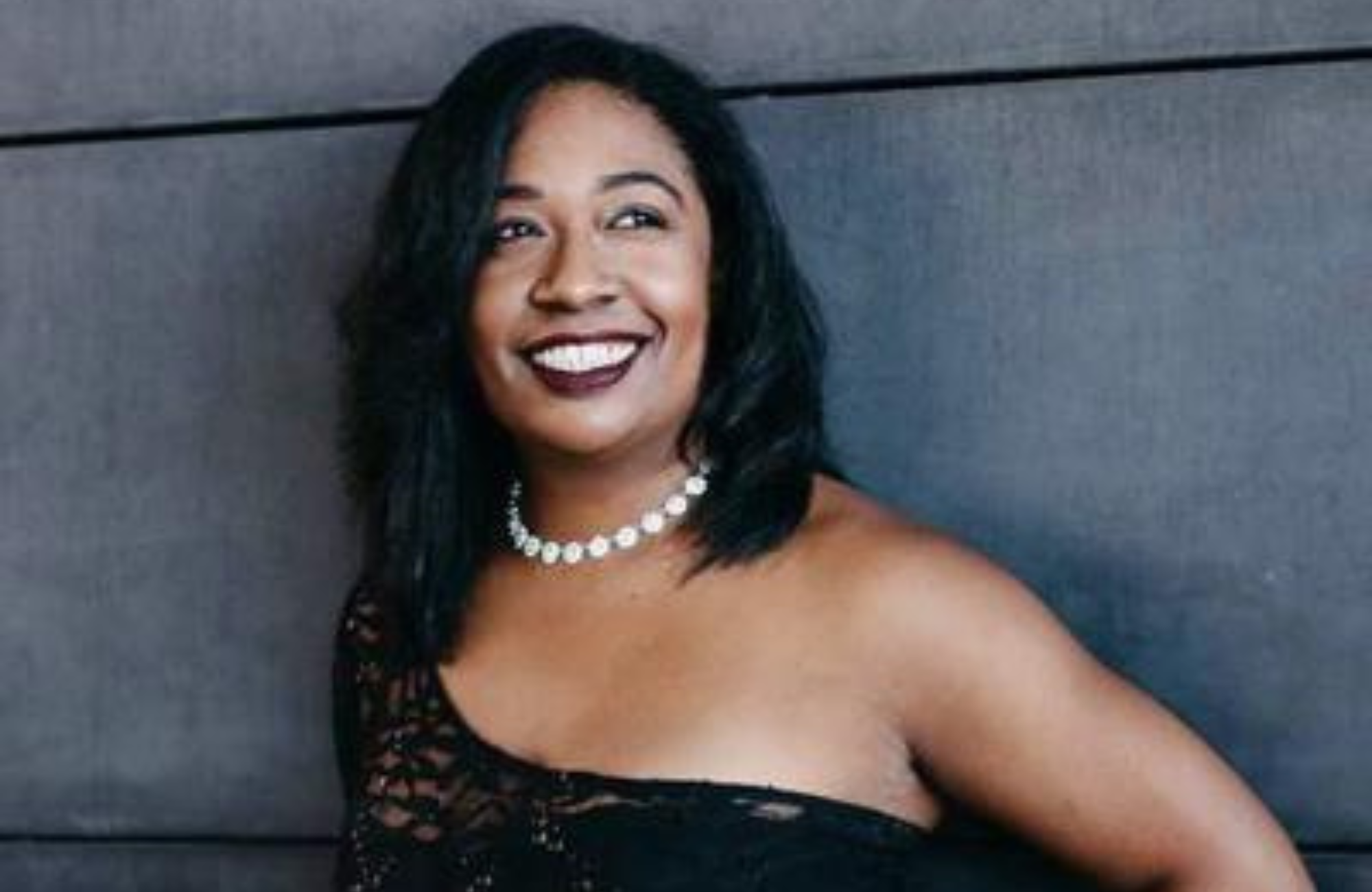
Lauded as “exquisite” by The Philadelphia Inquirer and “a pianist of sterling artistry” by Gramophone, Michelle Cann has become one of the most sought-after pianists of her generation. She made her debut with The Philadelphia Orchestra in 2021 and has recently performed concertos with The Cleveland ...
Lauded as “exquisite” by The Philadelphia Inquirer and “a pianist of sterling artistry” by Gramophone, Michelle Cann has become one of the most sought-after pianists of her generation. She made her debut with The Philadelphia Orchestra in 2021 and has recently performed concertos with The Cleveland Orchestra, the National Symphony Orchestra, the Orquestra Sinfônica Municipal de São Paulo, the Los Angeles Philharmonic, and the symphony orchestras of Atlanta, Baltimore, and Cincinnati.
Highlights of Cann’s 2023-24 season include appearances with the Charlotte, Hawaii, Indianapolis, Québec, Sarasota, and Winnipeg symphony orchestras, and recitals in New York City, Portland, Berkeley, Beverly Hills, and Denver. She also has teaching and performance residencies at the University of Indiana South Bend and Meany Center for the Performing Arts at the University of Washington.
Recognized as a leading interpreter of the piano music of Florence Price, Cann performed the New York City premiere of Price’s Piano Concerto in One Movement with The Dream Unfinished Orchestra in July 2016 and the Philadelphia premiere with The Philadelphia Orchestra and Music Director Yannick Nézet-Séguin in February 2021. Her recording of the concerto with the New York Youth Symphony won a Grammy Award in2023 for Best Orchestral Performance. Her acclaimed debut solo album Revival, featuring music by Price and Margaret Bonds, was released in May 2023 on the Curtis Studio label. She has also recorded two Price piano quintets with the Catalyst Quartet.
Cann was the recipient of the 2022 Sphinx Medal of Excellence, the highest honor bestowed by the Sphinx Organization. She also received the Cleveland Institute of Music’s 2022 Alumni Achievement Award and the 2022 Andrew Wolf Chamber Music Award.
A celebrated chamber musician, Cann has collaborated with leading artists including the Catalyst, Dover, and Juilliard string quartets, violinists Timothy and Nikki Chooi, and cellist Thomas Mesa. She has appeared as co-host and collaborative pianist with NPR’s From The Top, collaborating with actor/conductor Damon Gupton, violinist Leila Josefowicz, and violinist and MacArthur Fellow Vijay Gupta. Cann’s numerous media appearances include PBS Great Performances’ Now Hear This hosted by Scott Yoo and Living the Classical Life with host Zsolt Bognár.
Embracing a dual role as performer and pedagogue, Cann is frequently invited to teach master classes, give lecture-demonstrations, and lead teaching residencies. Recent residencies include the Gilmore International Keyboard Festival and the National Conference of the Music Teachers National Association. She has recorded lessons for tonebase, the popular piano lesson platform. She has also served on the juries of the Cleveland International Piano Competition, the Kauffman Music Center International Youth Piano Competition, and the piano competition of the Music Academy of the West.
A staunch believer in community-building through music, Cann has served as the director of two children’s choruses in the El Sistema-inspired program Play On Philly and was part of the inaugural class of ArtistYear fellows at the Curtis Institute of Music. Through ArtistYear, she worked with community partners City Year, Teach for America, and AmeriCorps to provide arts education and access to underserved communities in Philadelphia.
Cann holds bachelor’s and master’s degrees in piano performance from the Cleveland Institute of Music, where she studied with Paul Schenly and Dr. Daniel Shapiro, and an Artist’s Diploma from the Curtis Institute of Music, where she studied with Robert McDonald. She joined the Curtis piano faculty in 2020 as the inaugural Eleanor Sokoloff Chair in Piano Studies. She joined the piano faculty of the Manhattan School of Music in 2023.
Follow Michelle Cann on Instagram: @michelleacann

Described as bringing an “artisan storyteller’s sensitivity… shaping passages with clarity and power via beautifully sculpted dynamics… revealing orchestral character not seen or heard before” (Arts Knoxville) Lawrence Loh enjoys a dynamic career as a conductor of orchestras all over the world.
After an extensive two ...
Described as bringing an “artisan storyteller’s sensitivity… shaping passages with clarity and power via beautifully sculpted dynamics… revealing orchestral character not seen or heard before” (Arts Knoxville) Lawrence Loh enjoys a dynamic career as a conductor of orchestras all over the world.
After an extensive two year search, Lawrence Loh was recently named Music Director of the Waco Symphony Orchestra beginning in the Spring of 2024. Since 2015, he has served as Music Director of The Syracuse Orchestra (formerly called Symphoria), the successor to the Syracuse Symphony Orchestra. “The connection between the organization and its audience is one of the qualities that’s come to define Syracuse’s symphony as it wraps up its 10th season, a milestone that might have seemed impossible at the beginning,” (Syracuse.com) The Syracuse Orchestra and Lawrence Loh show that it is possible to create a “new, more sustainable artistic institution from the ground up.”
Appointed Assistant Conductor of the Pittsburgh Symphony in 2005, Mr Loh was quickly promoted to Associate and Resident Conductor within the first three years of working with the PSO. Always a favorite among Pittsburgh audiences, Loh returns frequently to his adopted city to conduct the PSO in a variety of concerts. Mr. Loh previously served as Music Director of the West Virginia Symphony Orchestra, Music Director of the Northeastern Pennsylvania Philharmonic, Artistic Director and Principal Conductor of the Syracuse Opera, Music Director of the Pittsburgh Youth Symphony Orchestra, Associate Conductor of the Dallas Symphony Orchestra, Associate Conductor of the Colorado Symphony Orchestra and Music Director of the Denver Young Artists Orchestra.
Mr. Loh’s recent guest conducting engagements include the San Francisco Symphony, Dallas Symphony, North Carolina Symphony, Baltimore Symphony, Sarasota Orchestra, Florida Orchestra, Pensacola Symphony, Atlanta Symphony, National Symphony, Detroit Symphony, San Diego Symphony, Seattle Symphony, National Symphony (D.C.), Utah Symphony, Rochester Philharmonic, Indianapolis Symphony, Calgary Philharmonic, Buffalo Philharmonic, Albany Symphony and the Cathedral Choral Society at the Washington National Cathedral. His summer appearances include the festivals of Grant Park, Boston University Tanglewood Institute, Tanglewood with the Boston Pops, Chautauqua, Sun Valley, Shippensburg, Bravo Vail Valley, the Kinhaven Music School and the Performing Arts Institute (PA).
As a self-described “Star Wars geek” and film music enthusiast, Loh has conducted numerous sold-out John Williams and film music tribute concerts. Part of his appeal is his ability to serve as both host and conductor. “It is his enthusiasm for Williams’ music and the films for which it was written that is Loh’s great strength in this program. A fan’s enthusiasm drives his performances in broad strokes and details and fills his speaking to the audience with irresistible appeal. He used no cue cards. One felt he could speak at filibuster length on Williams’ music.” (Pittsburgh Tribune)
Mr Loh has assisted John Williams on multiple occasions and has worked with a wide range of pops artists from Chris Botti and Ann Hampton Callaway to Jason Alexander and Idina Menzel. As one of the most requested conductors for conducting Films in Concert, Loh has led Black Panther, Star Wars (Episodes 4-6), Jaws, Nightmare Before Christmas, Jurassic Park, Casablanca, The Wizard of Oz and Singin’ in the Rain, among other film productions.
Lawrence Loh received his Artist Diploma in Orchestral Conducting from Yale, his Masters in Choral Conducting from Indiana University and his Bachelor of Arts from the University of Rochester. Lawrence Loh was born in southern California of Korean parentage and raised in Carlisle, Pennsylvania. He and his wife Jennifer have a son, Charlie, and a daughter, Hilary. Follow him on instagram @conductorlarryloh or Facebook at @lawrencelohconductor or visit his website, www.lawrenceloh.com


